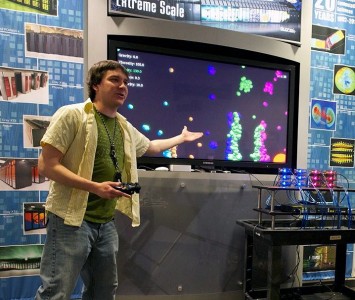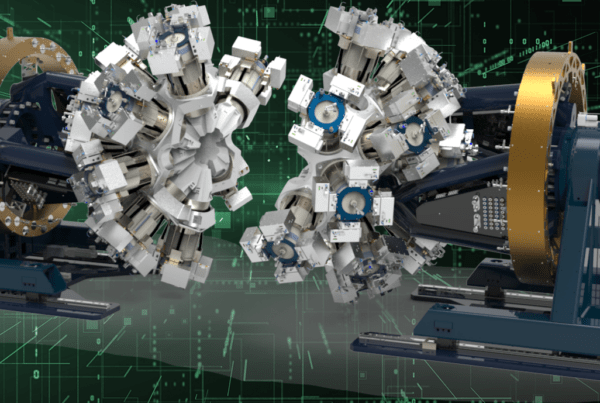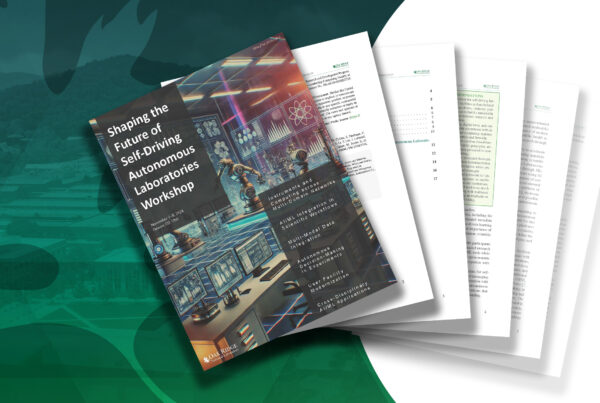
Robert French of the OLCF User Assistance and Outreach group talks about Tiny Titan to a group of boy scouts. French is telling the scouts how scientists will vary
simulation parameters to model different physical systems.
OLCF staff members collaborate to develop nine-core portable unit
To a middle or high school student, a view of Titan from the “Titan overlook” may not be particularly exciting. Titan may be the nation’s most powerful supercomputer for open science, but to a young person, it may look like a room full of black towers. Tiny Titan is changing that view.
Oak Ridge Leadership Computing Facility staff members Robert French, Adam Simpson, Suzanne Parete-Koon, and Anthony DiGirolamo developed Tiny Titan, which is substantially tinier than Titan in size and cost. The portable nine-core Tiny Titan parallel computer can be built for less than $1,000, while the real Titan is a multimillion-dollar supercomputer.
French said it’s easy to explain Titan to scientists. Other adults can relate to facts such as the size of the monthly power bill to run Titan. But translating Titan to a level middle and high school students can understand is difficult. “Kids aren’t engaged because it’s not visual,” French said.
Like Titan, most electronics operate on multicore systems. However, the educational system for the most part is still teaching serial processing, or computer processing on just one core. “Students need to learn to program in parallel,” French said. “Computers will continue to get more cores and become more complicated.”
Tiny Titan visually teaches how multicore computing works. Each of the nine nodes includes a different colored light, and images on the connected monitor use the same colors to show what each processor is doing. The more colors that light up on the computers, the faster the program will run. One of the demonstrations shows a split screen on a monitor, with the work of a single processor shown on the left side and the combined work of seven processors on the right trying to complete a calculation. The right side image of the calculation is generated more quickly. “The computer has to compute every single pixel of the set,” French said. “Seven can do it substantially faster than one.”
The team used nine Raspberry Pi Foundation computers—just $35 each—as the base for Tiny Titan. The Raspberry Pi processors are neither powerful nor fast, but they are inexpensive, which means they can be combined with other key parts to create an affordable multicore processor. Simpson said information on how to build a Tiny Titan eventually will be published freely online so anyone can build their own.
The next step for Tiny Titan will be the development of a curriculum for teaching parallel computing in high schools and STEM programs. The team is currently working on a plan to provide Tiny Titan workstations to Hamilton County Schools’ STEM School Chattanooga to test Tiny Titan in the classroom of an enthusiastic teacher. “The students are encouraged to figure things out for themselves,” Simpson said. “Their teacher is willing to put this in front of them and let them go.”
Teaching high-school students about parallel processing is a great way for ORNL to serve the East Tennessee community. Ultimately the program also will benefit OLCF by increasing the number of people with the skills needed to use, support, and develop software for large supercomputers.
French recently presented Tiny Titan to the ORNL community during the Next Big Idea competition, which offered researchers the chance to convince lab leadership that their idea is worth $50,000. While Tiny Titan didn’t win one of the funding awards, the audience favorite received the People’s Choice Award of a $100 gift card and lunch with Lab Director Thom Mason. —Wendy Hames





